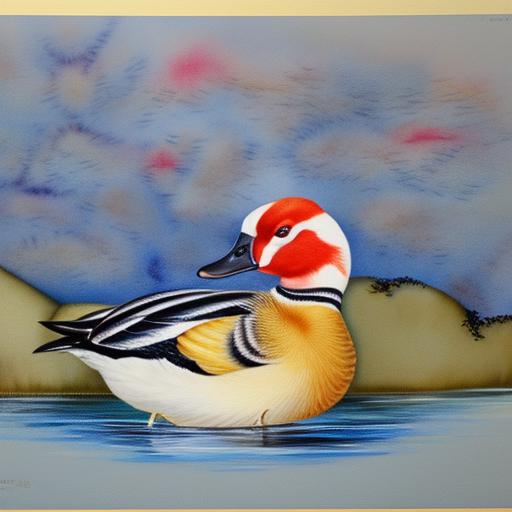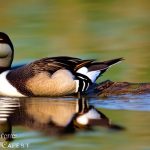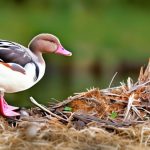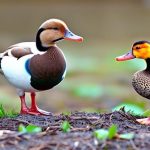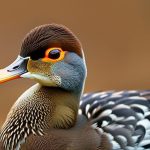Small duck breeds are becoming increasingly popular in Australia as more people are looking to keep ducks as pets or for small-scale farming. These small duck breeds are not only adorable and charming, but they also have practical uses such as egg production and pest control. In Australia, there are several small duck breeds that are well-suited to the climate and environment, making them a great choice for those looking to add ducks to their backyard or farm. Whether you are a beginner or an experienced duck owner, small duck breeds can be a delightful addition to your flock.
Small duck breeds are known for their friendly and sociable nature, making them great companions for both adults and children. They are also relatively easy to care for and can adapt well to various living conditions. In this article, we will explore the characteristics and traits of small duck breeds, popular breeds in Australia, housing and care requirements, feeding and nutrition needs, common health issues, and breeding and reproduction considerations for small duck breeds.
Key Takeaways
- Small duck breeds are popular in Australia for their manageable size and friendly nature.
- Small duck breeds are known for their adaptability, hardiness, and ability to forage for food.
- Popular small duck breeds in Australia include the Call Duck, East Indie, and Dutch Hookbill.
- Housing and care for small duck breeds require a secure and predator-proof enclosure with access to water for swimming and foraging.
- Feeding and nutrition for small duck breeds should include a balanced diet of commercial duck feed, fresh greens, and access to clean water.
Characteristics and Traits of Small Duck Breeds
Small duck breeds are known for their compact size, making them suitable for smaller living spaces such as backyard coops or urban farms. They are also known for their friendly and docile nature, making them great pets for families with children. Small duck breeds are generally hardy and adaptable, able to thrive in a variety of climates and environments. They are also known for their excellent foraging abilities, making them effective at controlling pests in gardens and farms.
In terms of appearance, small duck breeds come in a variety of colors and patterns, adding a beautiful and diverse aesthetic to any flock. They also have a distinctive waddle and quack that adds to their charm. Small duck breeds are known for their high egg production, making them a practical choice for those looking to raise ducks for eggs. Overall, small duck breeds are a delightful addition to any backyard or farm, bringing joy, companionship, and practical benefits to their owners.
Popular Small Duck Breeds in Australia
In Australia, there are several popular small duck breeds that are well-suited to the climate and environment. One of the most popular small duck breeds is the Call Duck, known for its compact size, friendly nature, and high egg production. Call Ducks come in a variety of colors and patterns, adding a beautiful aesthetic to any flock. Another popular small duck breed in Australia is the East Indies Duck, known for its striking black plumage and friendly disposition. East Indies Ducks are also excellent foragers and make great pets for families.
The Dutch Hookbill is another popular small duck breed in Australia, known for its unique hooked bill and friendly personality. Dutch Hookbills come in a variety of colors and are known for their high egg production. The Silver Appleyard is also a popular small duck breed in Australia, known for its beautiful silver plumage and excellent egg-laying abilities. These small duck breeds are just a few examples of the many delightful options available to those looking to add ducks to their backyard or farm in Australia.
Housing and Care for Small Duck Breeds
When it comes to housing small duck breeds, it is important to provide them with a safe and comfortable environment that meets their specific needs. A secure coop or shelter is essential to protect them from predators and the elements. The coop should have adequate ventilation and be spacious enough to allow the ducks to move around comfortably. It is also important to provide nesting boxes for egg-laying ducks and a secure fencing or enclosure to allow them access to outdoor space while keeping them safe.
In terms of care, small duck breeds require regular access to clean water for drinking and bathing. It is important to regularly clean their water containers to prevent the spread of disease. Ducks also need access to a balanced diet of commercial duck feed supplemented with fresh greens and insects for optimal health. Regular grooming and health checks are also important to ensure the well-being of small duck breeds. Overall, providing proper housing and care for small duck breeds is essential to their health and happiness.
Feeding and Nutrition for Small Duck Breeds
Feeding small duck breeds a balanced diet is essential for their overall health and well-being. Commercial duck feed formulated specifically for ducks is readily available and provides essential nutrients for optimal growth and egg production. It is important to choose a high-quality feed that meets the specific nutritional needs of ducks. Additionally, supplementing their diet with fresh greens such as lettuce, spinach, and kale can provide added vitamins and minerals.
Small duck breeds also benefit from access to insects and other protein-rich treats such as mealworms or earthworms. These treats can be given in moderation as part of a well-rounded diet. It is important to provide ducks with access to clean water at all times for drinking and bathing. Ducks should have access to shallow water for bathing as it helps keep their feathers clean and healthy. Overall, providing small duck breeds with a balanced diet and access to clean water is essential for their health and productivity.
Health and Common Issues for Small Duck Breeds
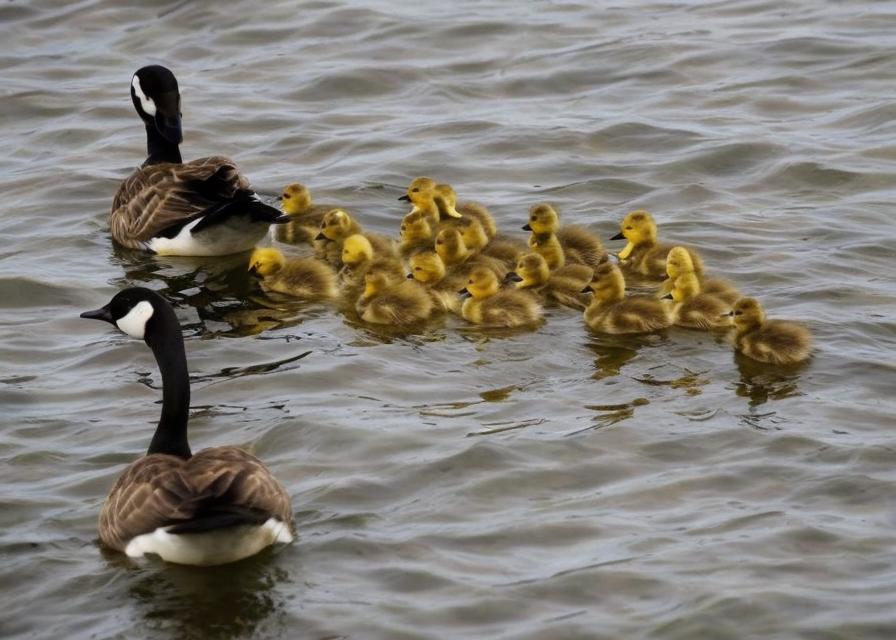
Small duck breeds are generally hardy and resilient, but they can still be susceptible to certain health issues if proper care is not provided. Common health issues for small duck breeds include respiratory infections, bumblefoot, parasites, and nutritional deficiencies. It is important to regularly monitor the health of ducks and seek veterinary care if any issues arise.
Preventative measures such as regular grooming, providing a clean living environment, and offering a balanced diet can help reduce the risk of health issues. Additionally, providing ducks with access to clean water for drinking and bathing is essential for maintaining their overall health. Overall, being proactive about the health of small duck breeds is essential for ensuring their well-being.
Breeding and Reproduction of Small Duck Breeds
Breeding small duck breeds can be a rewarding experience for those looking to expand their flock or raise ducks for eggs or meat. When breeding small duck breeds, it is important to provide them with a suitable nesting area that is safe and comfortable. Ducks will lay eggs in nesting boxes or secluded areas within the coop.
Once eggs are laid, it is important to provide proper incubation conditions if you want the eggs to hatch. This may involve using an incubator or allowing a broody hen or duck to sit on the eggs until they hatch. It is important to monitor the incubation process closely and provide proper care for the mother duck and her ducklings once they hatch.
Overall, breeding small duck breeds requires careful planning and attention to ensure the health and well-being of both the parent ducks and their offspring. With proper care and attention, breeding small duck breeds can be a fulfilling experience that adds joy and productivity to your flock.
If you’re considering raising small duck breeds in Australia, you might also be interested in learning about turning a shed into a chicken coop. This article from Poultry Wizard provides valuable insights into repurposing a shed for poultry housing, which could be useful for creating a suitable environment for your ducks. Check out the article here to discover practical tips for transforming a shed into a functional and comfortable space for your feathered friends.
FAQs
What are some small duck breeds in Australia?
Some small duck breeds in Australia include the Call Duck, East Indies Duck, and the Australian Spotted Duck.
What are the characteristics of small duck breeds?
Small duck breeds are typically compact in size, have short bills, and are known for their friendly and docile nature. They are also known for their vibrant plumage and are popular for their ornamental value.
What are the benefits of raising small duck breeds in Australia?
Raising small duck breeds in Australia can provide benefits such as pest control, egg production, and entertainment. They are also relatively easy to care for and require less space compared to larger duck breeds.
What are the housing and care requirements for small duck breeds in Australia?
Small duck breeds require a secure and predator-proof housing, access to clean water for swimming and drinking, a balanced diet, and protection from extreme weather conditions. They also need regular veterinary care and attention to their overall well-being.
Are small duck breeds suitable for backyard or urban environments in Australia?
Yes, small duck breeds are suitable for backyard or urban environments in Australia as they require less space compared to larger duck breeds. However, it is important to check local regulations and restrictions regarding the keeping of ducks in urban areas.
Meet Walter, the feathered-friend fanatic of Florida! Nestled in the sunshine state, Walter struts through life with his feathered companions, clucking his way to happiness. With a coop that’s fancier than a five-star hotel, he’s the Don Juan of the chicken world. When he’s not teaching his hens to do the cha-cha, you’ll find him in a heated debate with his prized rooster, Sir Clucks-a-Lot. Walter’s poultry passion is no yolk; he’s the sunny-side-up guy you never knew you needed in your flock of friends!

